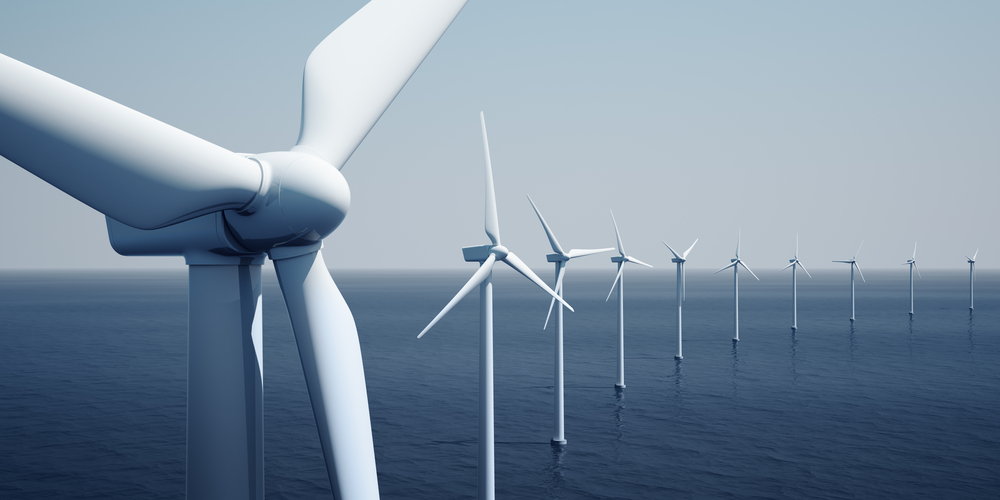
Which Way Is Onshore Wind Blowing?
Onshore wind is gearing up for another great year. A new report out last month showed US wind costs dropped 7% in 2018. In some US locations, wind energy is cheaper than gas. Upstate New York was one of the locations where wind is cheaper.
Unsubsidized costs are running $29/MWh and $56/MWh according to a November 2018 report 'Levelized Cost of Energy and Levelized Cost of Storage 2018.'.
If we compare those figures to the price average of a coal plant at $36/MWh we can see that wind is outpacing coal.
2019 appears to be a year of growth in the New England wind industry. States are making legislative changes to allow wind expansion in their communities. And the November 2018 elections saw positive changes in governments towards a more friendly environmental outlook.
Massachusetts Working Towards Greater Wind Production
Wind energy is growing in Massachusetts, both on and offshore operations. The government of Massachusetts is promoting wind energy as a clean, dependable and secure form of energy for the state.
State government offices such as the Office of Geographic and Environmental Information (MassGIS) is working with local towns and communities to rewrite ordinances to favor placement of wind turbines. Local residents have expressed concerns about the environmental impact such as bird and bat safety as well as noise and aesthetics of the turbines.
To help with this Massachusetts has developed examples of wind bylaws to aid local communities with developing wind energy. Massachusetts has several regional areas that are quite good for wind development. Along the coastal section of the state as well as in the western mountain areas.
A Windier Future With Maines New Governor-Elect
While wind power grows nationally, the current governor of Maine Paul LePage had set up several political roadblocks. LePage's past eight years in office have been very critical of renewable energy and has singled out wind as being an unworthy source of energy.
Maine has a tremendous capacity for wind power and currently has 16 commercial land-based wind farms that provide 900 megawatts of power. According to the federal Energy Information Administration, they generated 20 percent of the state’s net energy last year.
The Bingham Wind project in western Maine one of the largest wind farms in New England producing 185 megawatts. They have been saddled with legislative roadblocks and issues with connecting to the regional electric grid.
Governor LePage's disparaging attitude towards wind has also affected the growth of ocean energy in the state. In 2013 his administration forced out Statoil, a Norwegian company wanting to expand wind energy in the state.
Other states in New England such as Massachusetts, Connecticut, and Rhode Island have mandated their utility companies to buy power from renewable energy sources. This has fueled a boom to both land and offshore wind farms.
However, great news came out of the November 2018 elections for Maines Renewable energy future. LePage was soundly defeated by Democrat Janet Mills. In addition, democratic majorities in both the state house and senate were elected.
Mills will be Maines first female governor. A lifelong environmentalist Mills campaigned on restoring Maines environment. She has stated that she will put expansions in wind and solar energy the top of her political agenda. Mills also plans to restore net metering which was curtailed under LePage.
Jeremy Payne of the Maine Renewable Energy Association (MREA), expressed enthusiasm and stated that they look forward to “a positive, fact-based discourse around energy policy.” Growth has been staled since 2016 but Payne says now they can get back on track.
Two wind farms, Weaver Wind and Downeast Wind, will move forward in 2019. Weaver Wind is a 22-turbine, a 72.6-megawatt project located in Hancock County and Downeast Wind is a $270 million coastal project.
New England Looks Towards Kansas
We don’t normally look towards Kansas as a leader in wind energy. Kansas is a very conservative state that is not considered environmentally friendly. Yet 36% of their state's energy comes from wind. They have not been pushed by climate change or stalwart environmentalists as many states have.
Kansas has embraced wind energy because of pure economics. Farmers are making much more money by leasing land to wind power companies. Kansas residents see wind energy as a form of independence. They do not want to depend on fossil fuels from the middle east or Canadian shale oil. And in addition, Kansas is experiencing job growth and lower energy costs due to the growth in renewables.
